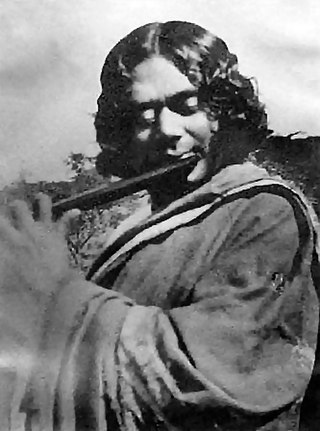Top Qs
Timeline
Chat
Perspective
List of Padma Bhushan award recipients (1960–1969)
From Wikipedia, the free encyclopedia
Remove ads
The Padma Bhushan is the third-highest civilian award of the Republic of India.[1] Instituted on 2 January 1954, the award is given for "distinguished service of a high order", without distinction of race, occupation, position, or sex.[2] The recipients receive a Sanad, a certificate signed by the President of India and a circular-shaped medallion with no monetary association. The recipients are announced every year on Republic Day (26 January) and registered in The Gazette of India—a publication used for official government notices and released weekly by the Department of Publication, under the Ministry of Urban Development.[3] The conferral of the award is not considered official without its publication in the Gazette. The name of recipient, whose award have been revoked or restored, both of which require the authority of the President, is archived and they are required to surrender their medal when their name is struck from the register;[4] none of the conferments of Padma Bhushan during 1960–1969 have been revoked or restored. The recommendations are received from all the state and the union territory governments, as well as from Ministries of the Government of India, the Bharat Ratna and the Padma Vibhushan awardees, the Institutes of Excellence, the Ministers, the Chief Ministers and the Governors of State, and the Members of Parliament including private individuals.[3]
When instituted in 1954, the Padma Bhushan was classified as "Dusra Varg" (Class II) under the three-tier Padma Vibhushan awards, which were preceded by the Bharat Ratna in hierarchy. On 15 January 1955, the Padma Vibhushan was reclassified into three different awards as the Padma Vibhushan, the Padma Bhushan and the Padma Shri.[3] The criteria included "distinguished service of a high order in any field including service rendered by Government servants", but excluded those working with the public sector undertakings with the exception of doctors and scientists. The 1954 statutes did not allow posthumous awards; this was subsequently modified in the January 1955 statute.[4] The design was also changed to the form that is currently in use; it portrays a circular-shaped toned bronze medallion 1+3⁄4 inches (44 mm) in diameter and 1⁄8 inch (3.2 mm) thick. The centrally placed pattern made of outer lines of a square of 1+3⁄16 inches (30 mm) side is embossed with a knob carved within each of the outer angles of the pattern. A raised circular space of diameter 1+1⁄16 inches (27 mm) is placed at the centre of the decoration. A centrally located lotus flower is embossed on the obverse side of the medal and the text "Padma" is placed above and the text "Bhushan" is placed below the lotus written in Devanagari script. The State Emblem of India is displayed in the centre of the reverse side, together with the national motto of India, "Satyameva Jayate" (Truth alone triumphs) in Devanagari script, which is inscribed on the lower edge. The rim, the edges and all embossing on either side is of standard gold with the text "Padma Bhushan" of gold gilt. The medal is suspended by a pink riband 1+1⁄4 inches (32 mm) in width with a broad white stripe in the middle.[3][4] It is ranked fifth in the order of precedence of wearing of medals and decorations of the Indian civilian and military awards.[a]
A total of 200 awards were presented in the 1960s – ten in 1960, followed by thirteen in 1961, twenty-seven in 1962, twelve in 1963, eighteen in 1964, twenty-five in 1965, fourteen in 1966, twenty-four in 1967, twenty-eight in 1968, and twenty-nine in 1969. The Padma Bhushan in the 1960s was also conferred upon five foreign recipients – two from the United States and one each from Canada, Russia, and the United Kingdom. Individuals from nine different fields were awarded, which includes sixty-nine from literature and education, thirty-two from medicine, twenty-two from civil services, seventeen artists, sixteen from public affairs, fifteen from science and engineering, fourteen from social work, ten from trade and industry, and five sportspersons. Journalist Manikonda Chalapathi Rau and Kannada writer K. Shivaram Karanth returned their 1968 awards, while Sitar player Vilayat Khan refused to accept it, with him stating that "the selection committees were incompetent to judge [his] music".[6][b]
Remove ads
Recipients














Remove ads
Explanatory notes
- The order of precedence is: Bharat Ratna, Param Vir Chakra, Ashoka Chakra, Padma Vibhushan and Padma Bhushan.[5]
- Vilayat Khan had earlier refused Padma Shri (1964) and later also refused Padma Vibhushan (2000).[7]
- K. Shivaram Karanth returned the award to protest against the Emergency declared in the country in 1975.[26]
- Manikonda Chalapathi Rau returned the award.[6]
- Non-citizen recipients
Remove ads
References
External links
Wikiwand - on
Seamless Wikipedia browsing. On steroids.
Remove ads
